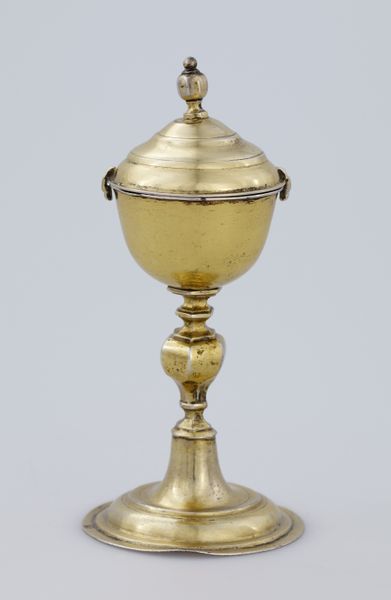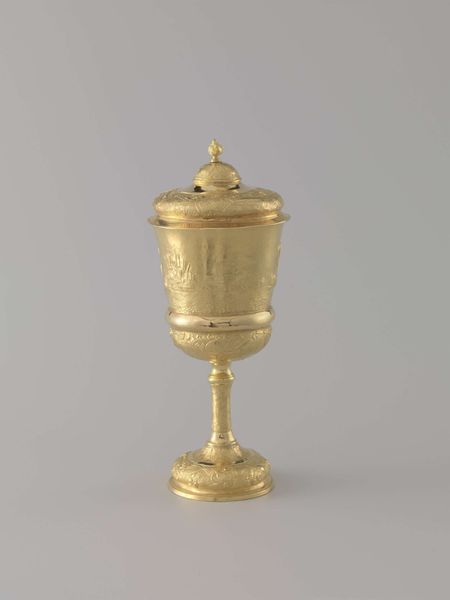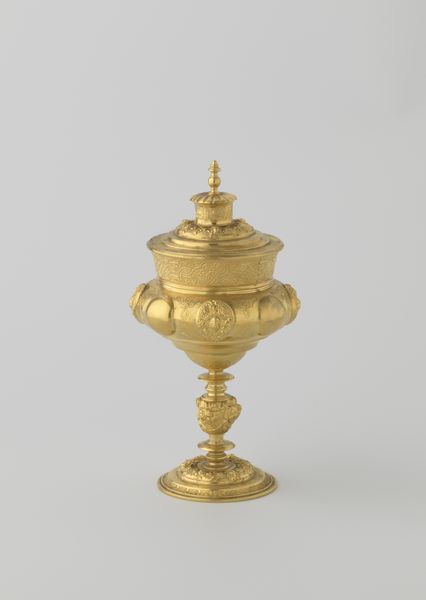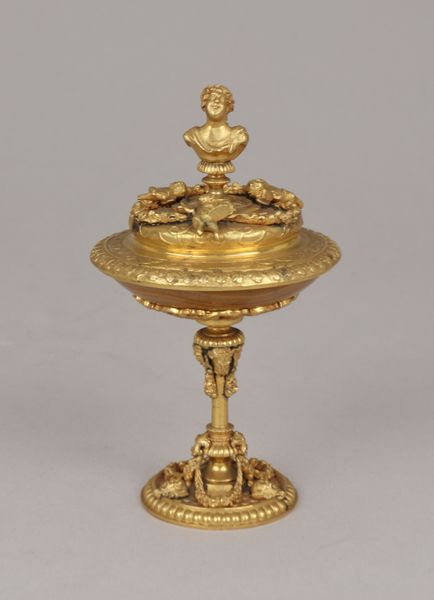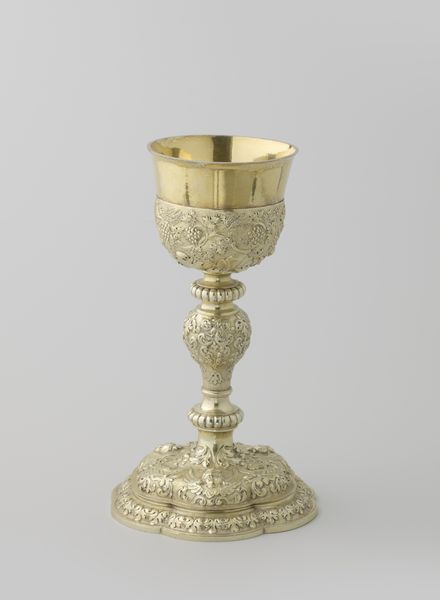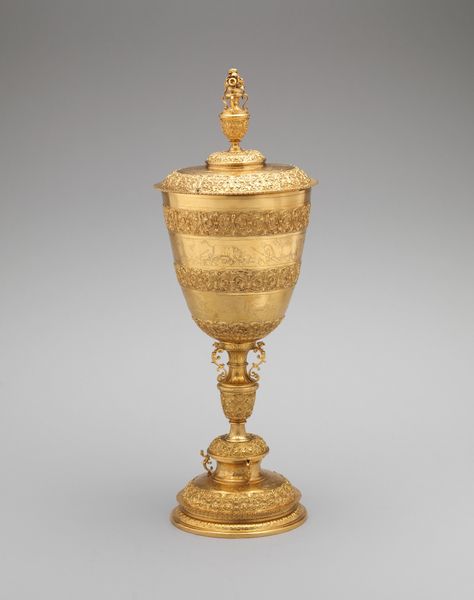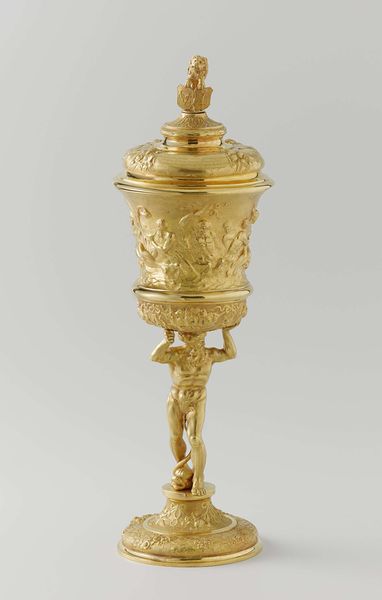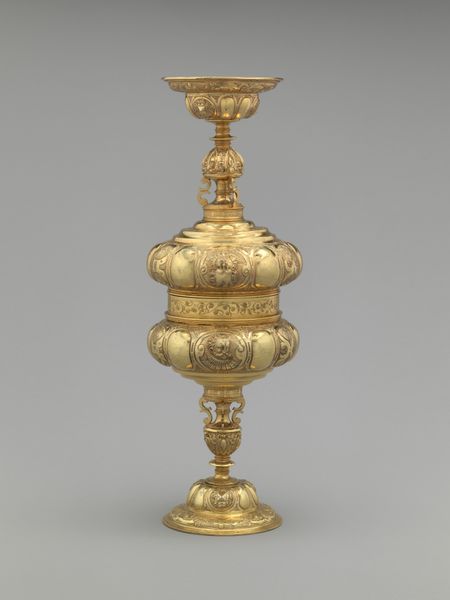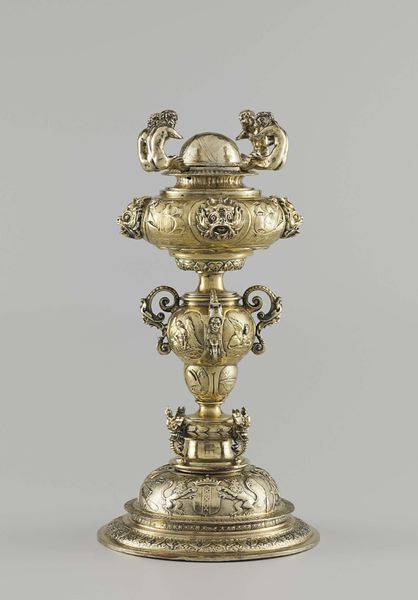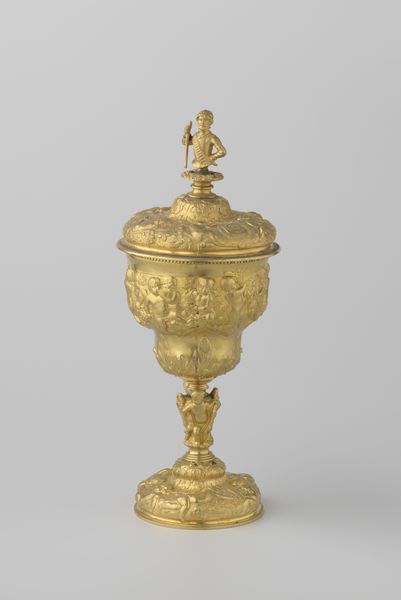
silver, metal, sculpture
#
byzantine-art
#
silver
#
metal
#
sculpture
#
decorative-art
#
italy
Dimensions: 6 5/16 × 2 7/16 × 2 11/16 in. (16.03 × 6.19 × 6.83 cm)
Copyright: Public Domain
This travel pyxis was created by Giovacchino Belli, an Italian silversmith. It's made entirely of gold and exemplifies neoclassicism, evident in its balanced form and refined ornamentation. The pyxis is composed of three primary segments: the base, stem, and container, each contributing to the vessel's harmonious structure. Note how the vertical ribs on the base and stem lead the eye upward to the smooth curvature of the container. Above this, the lid features intricately engraved laurel leaves and a cross, symbolizing triumph and faith. The cherubic faces connecting the container to the festoon further enhance the pyxis's aesthetic. Functionally, the pyxis was used to hold the Eucharist during travel, turning a container into a sacred object. The symmetry, proportion, and symbolic adornments all underscore its intended purpose and elevate it beyond mere utility. The pyxis is a testament to the enduring dialogue between form, function, and meaning.
Comments
minneapolisinstituteofart almost 2 years ago
⋮
In the Catholic church, a pyxis serves as a receptacle for the Blessed Host. The four cherub heads, which decorate its cover, allude to the divine content, but they also refer to the teaching, according to which the Mass on earth is mirrored by the divine liturgy of the angels in the parallel universe of heaven.
Join the conversation
Join millions of artists and users on Artera today and experience the ultimate creative platform.
